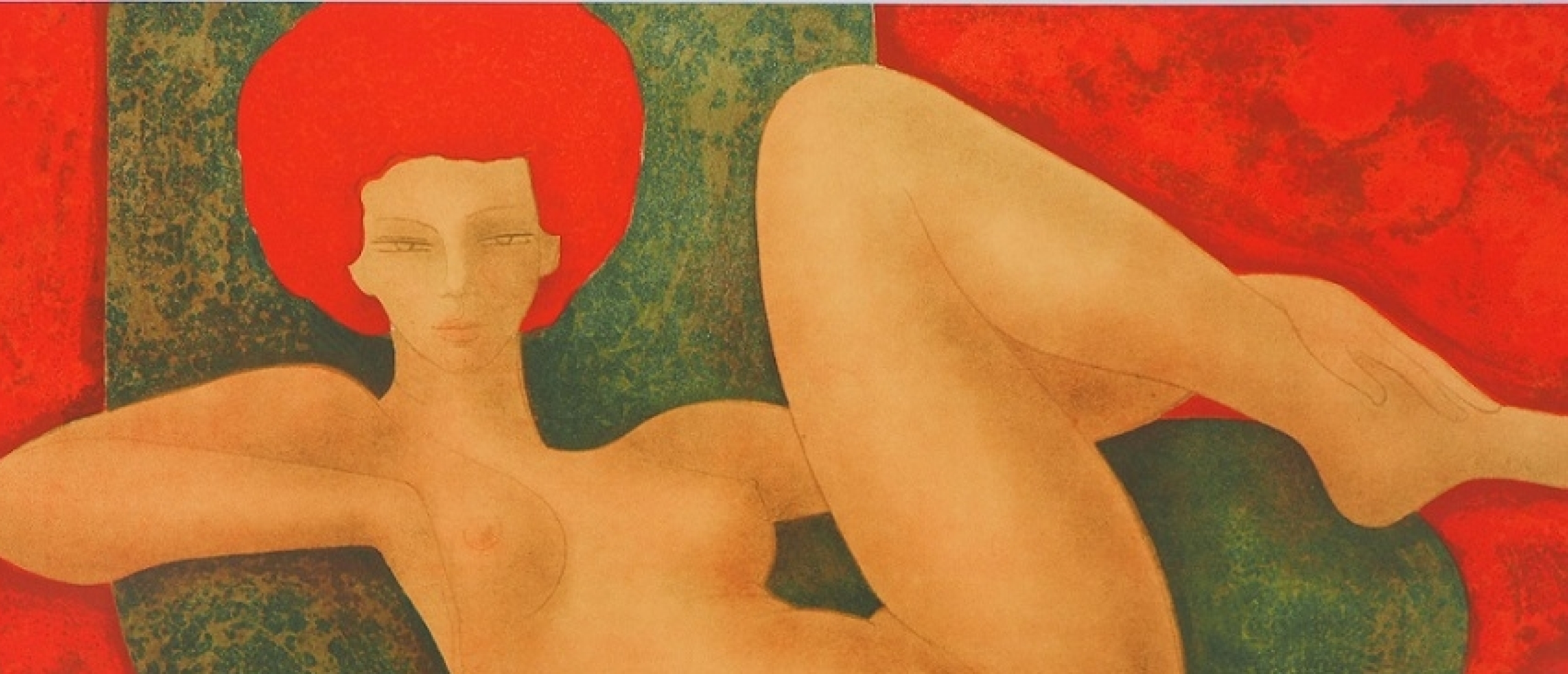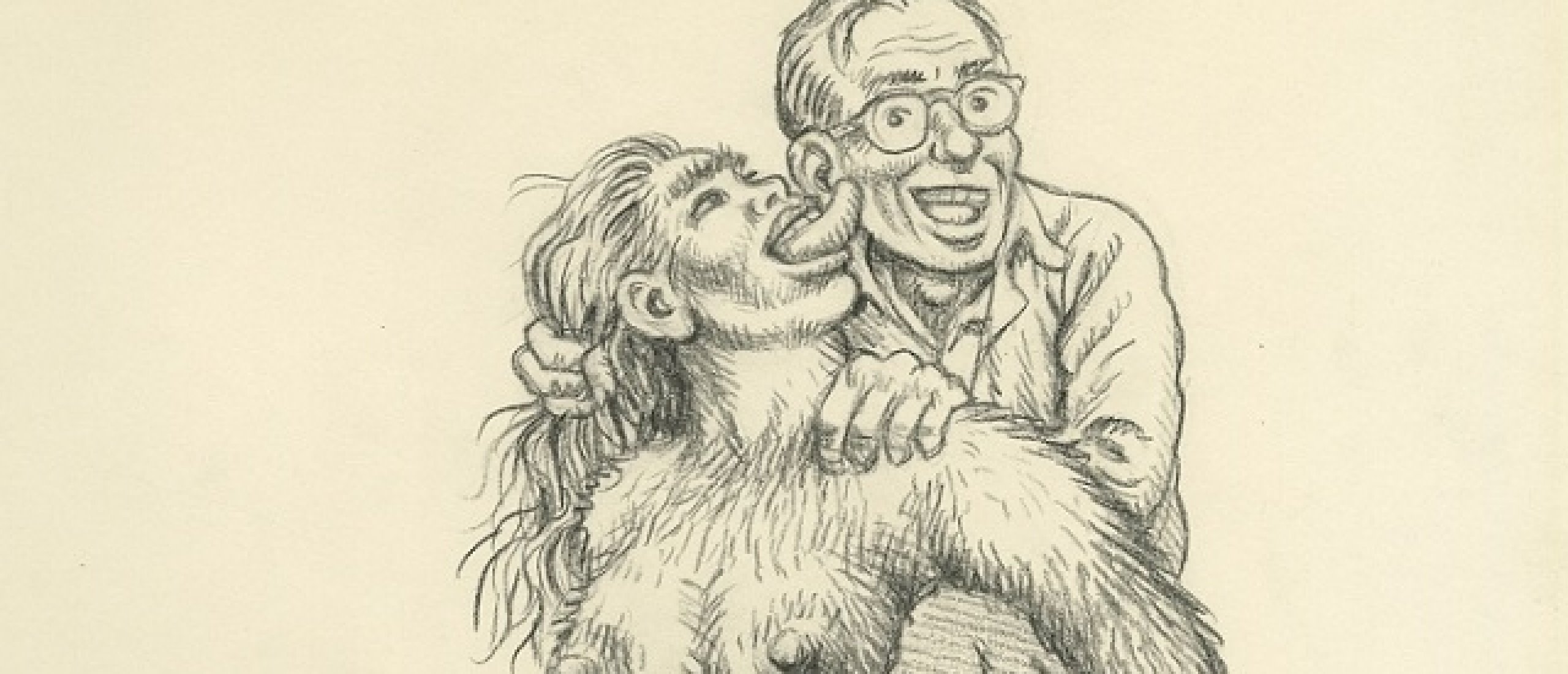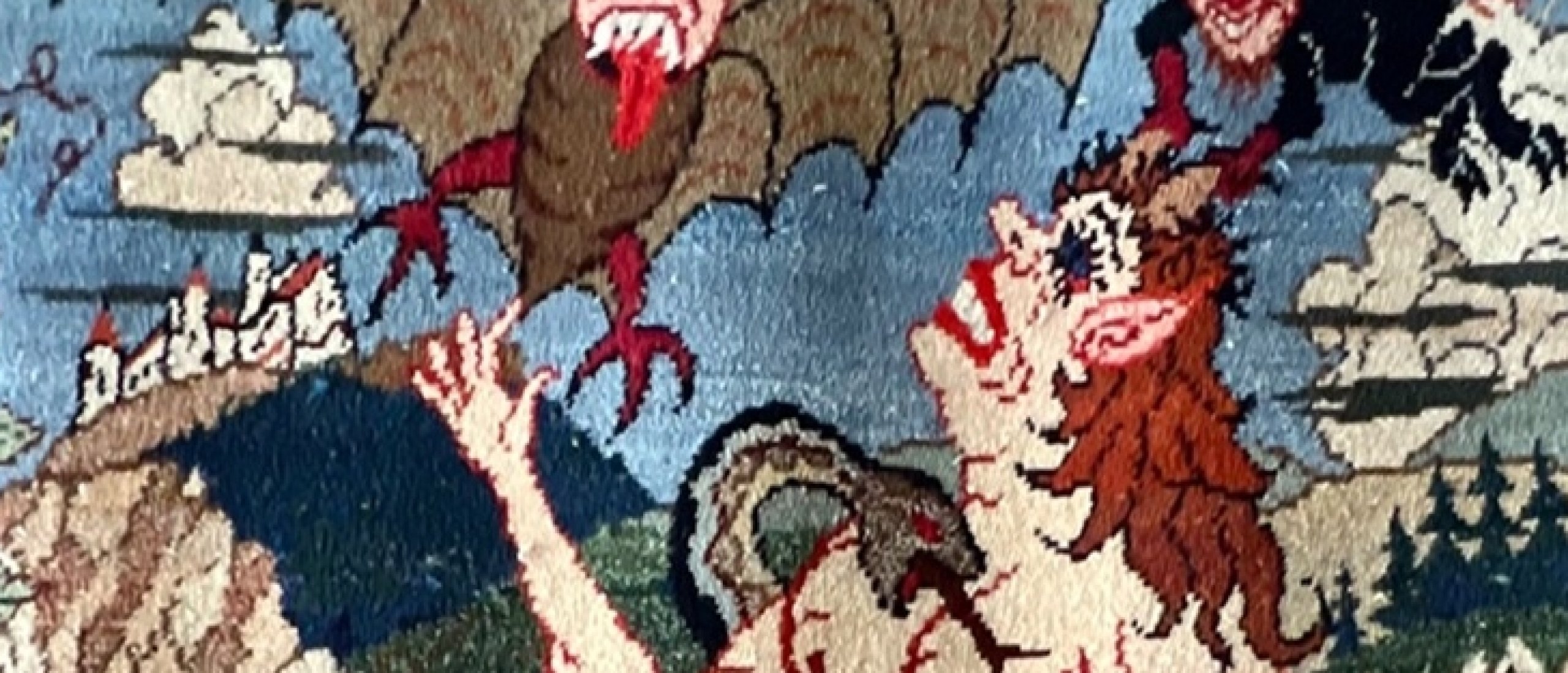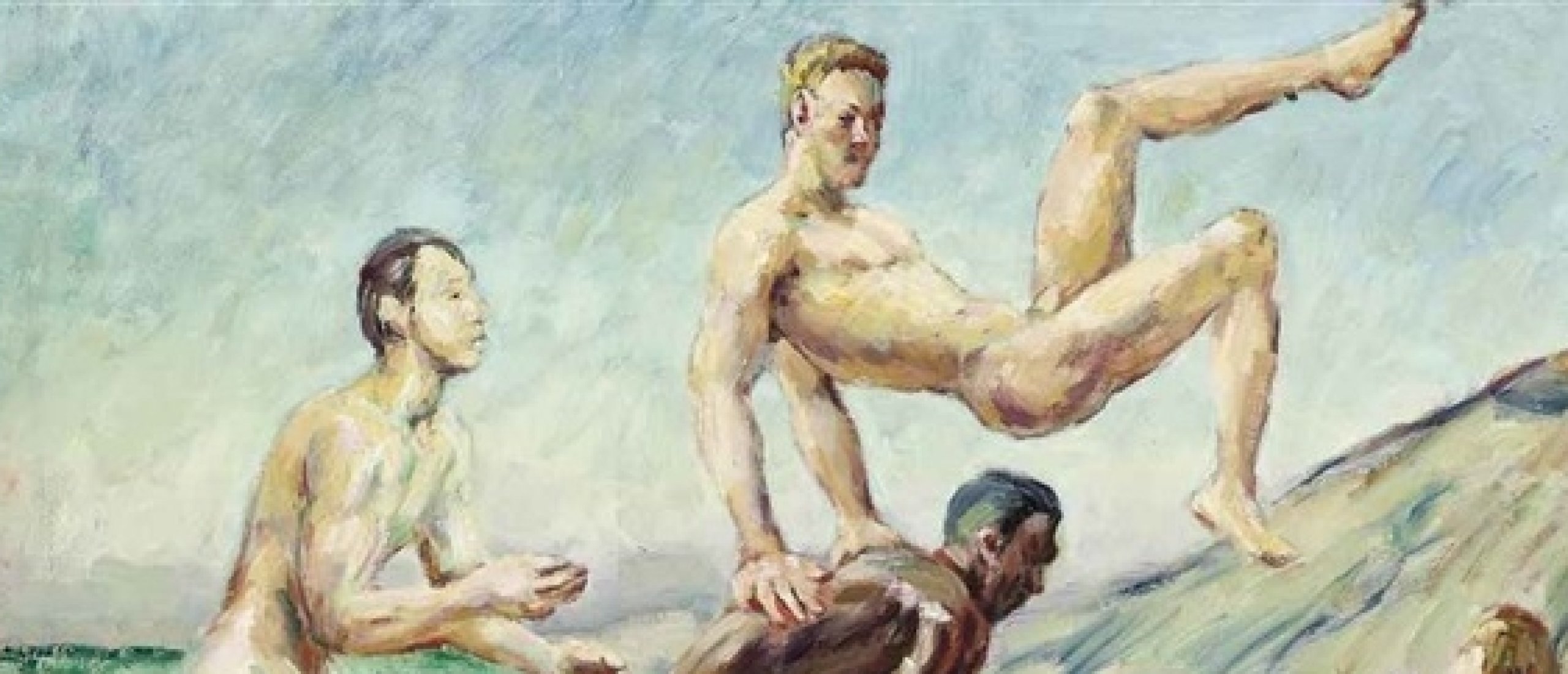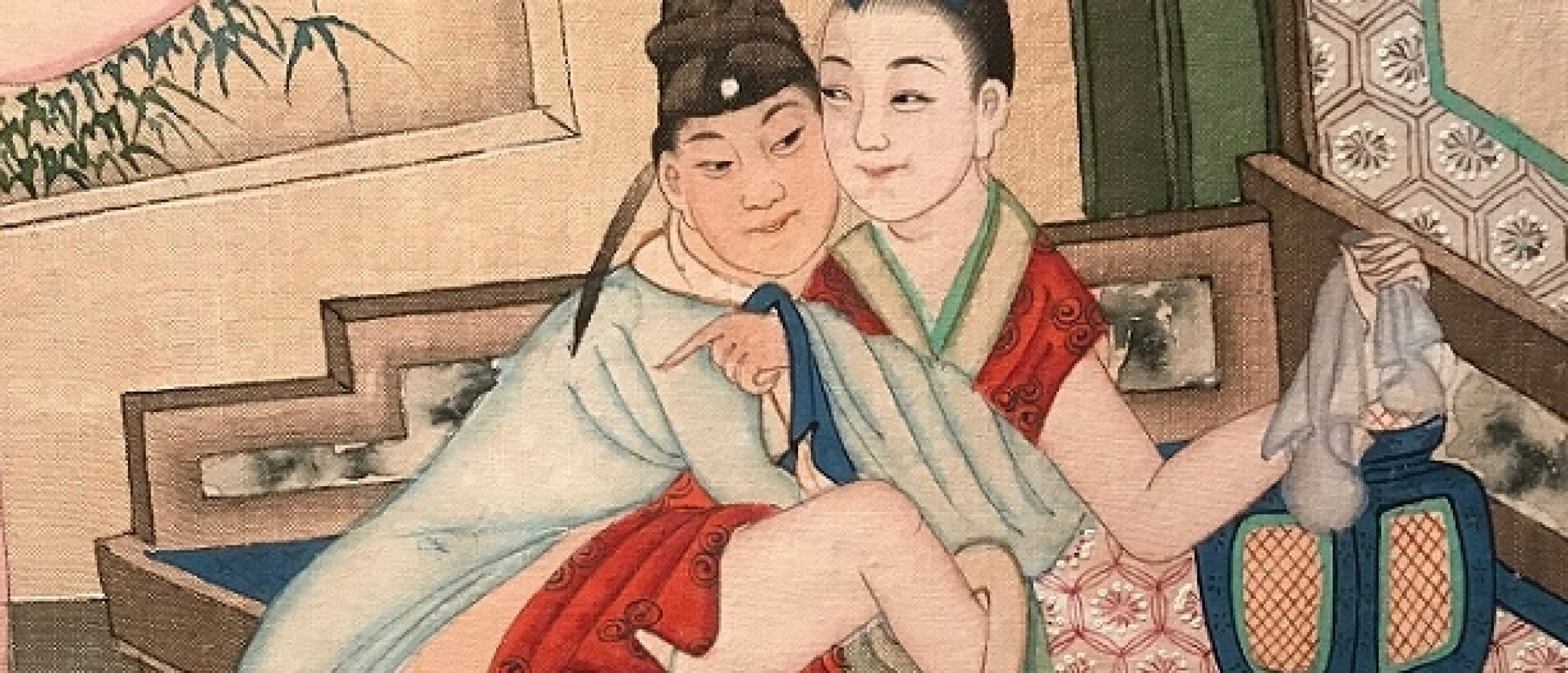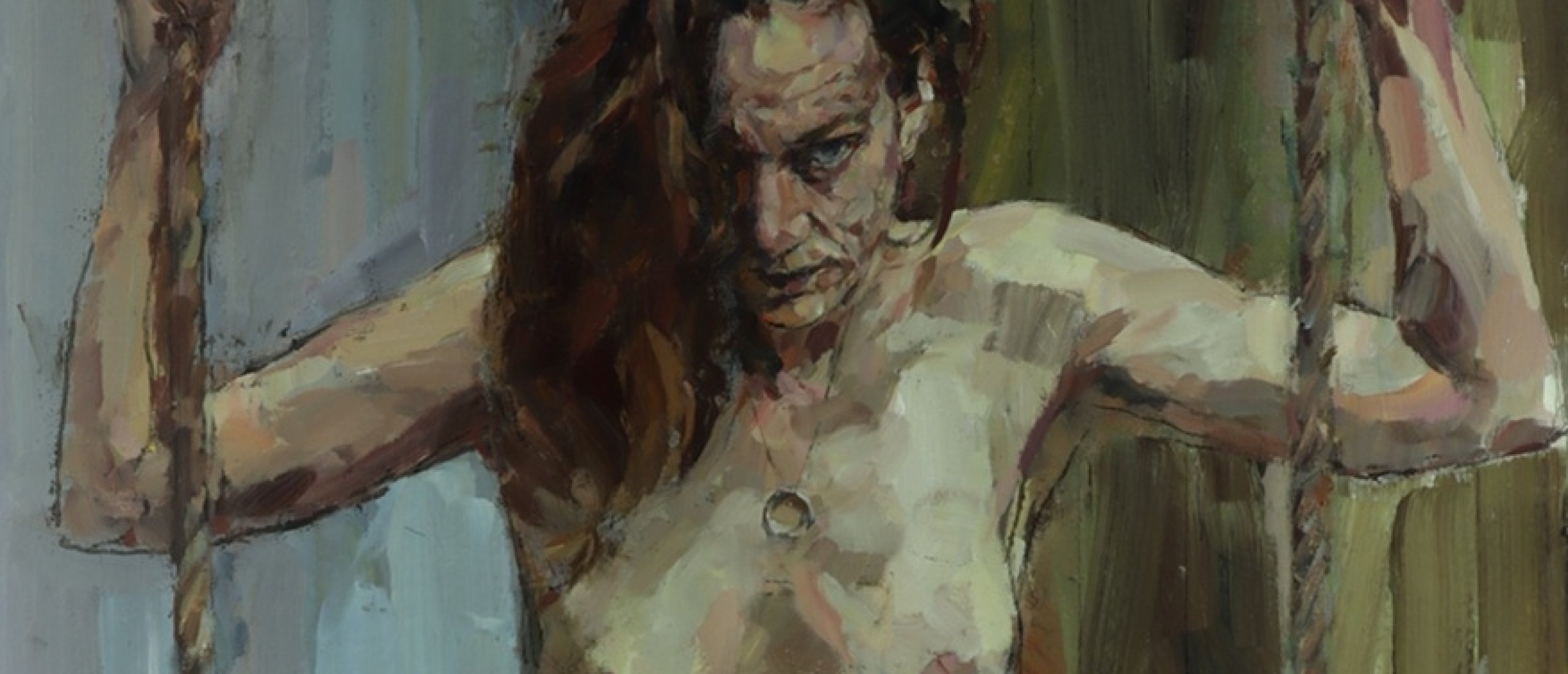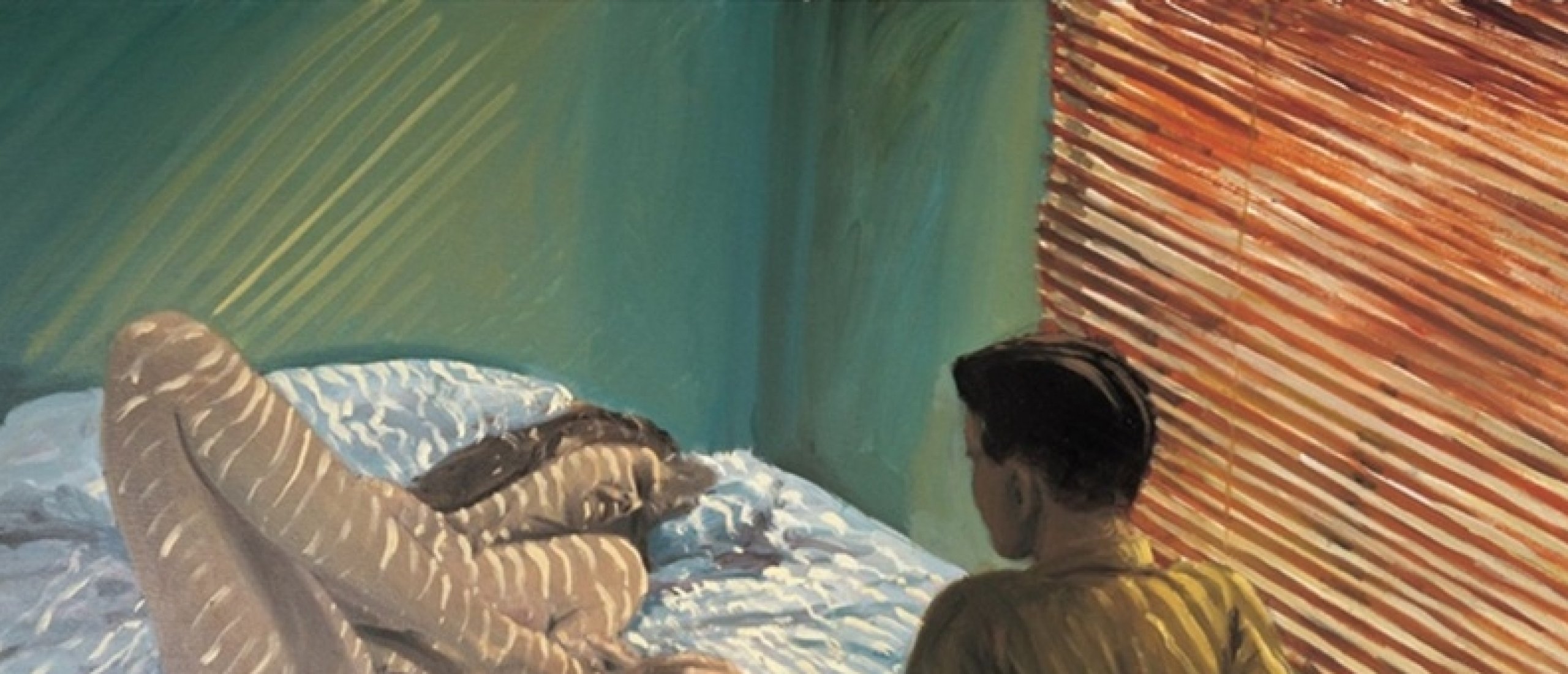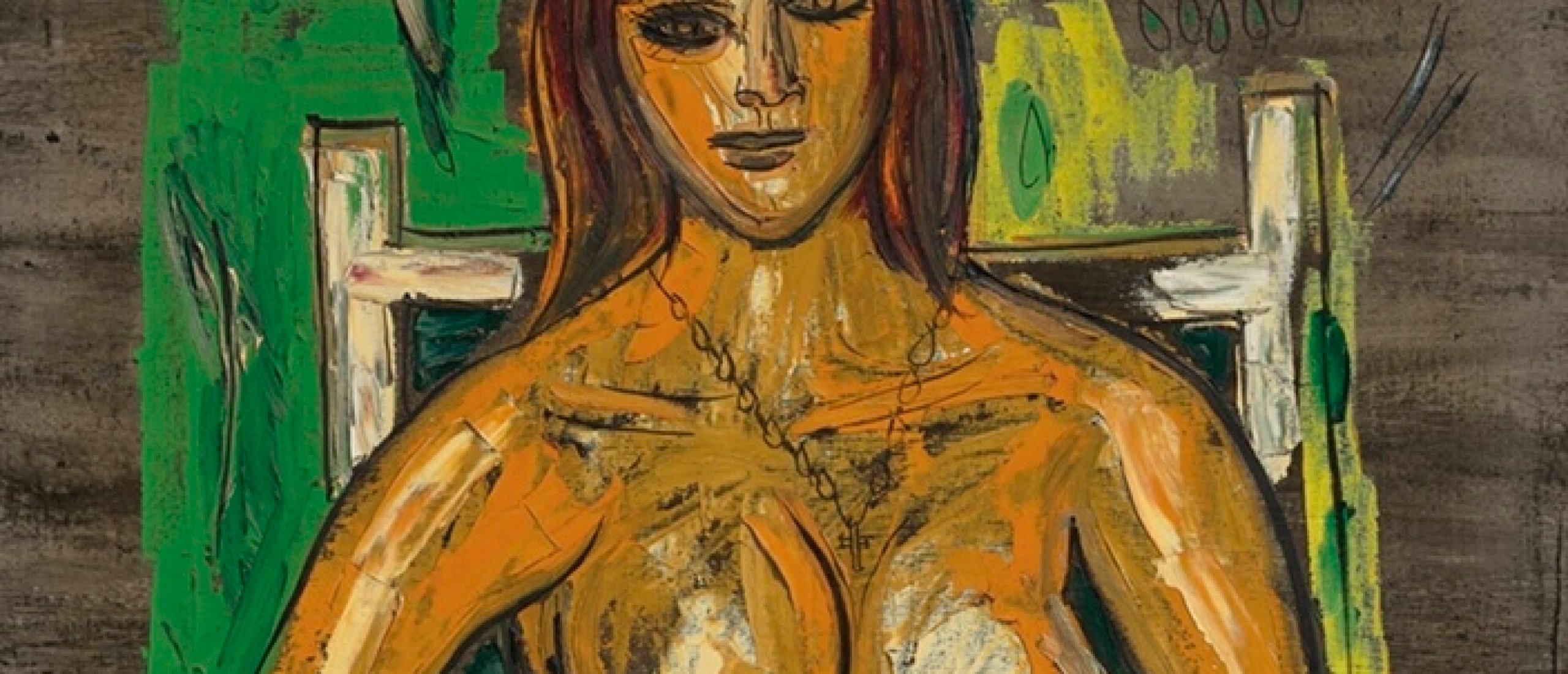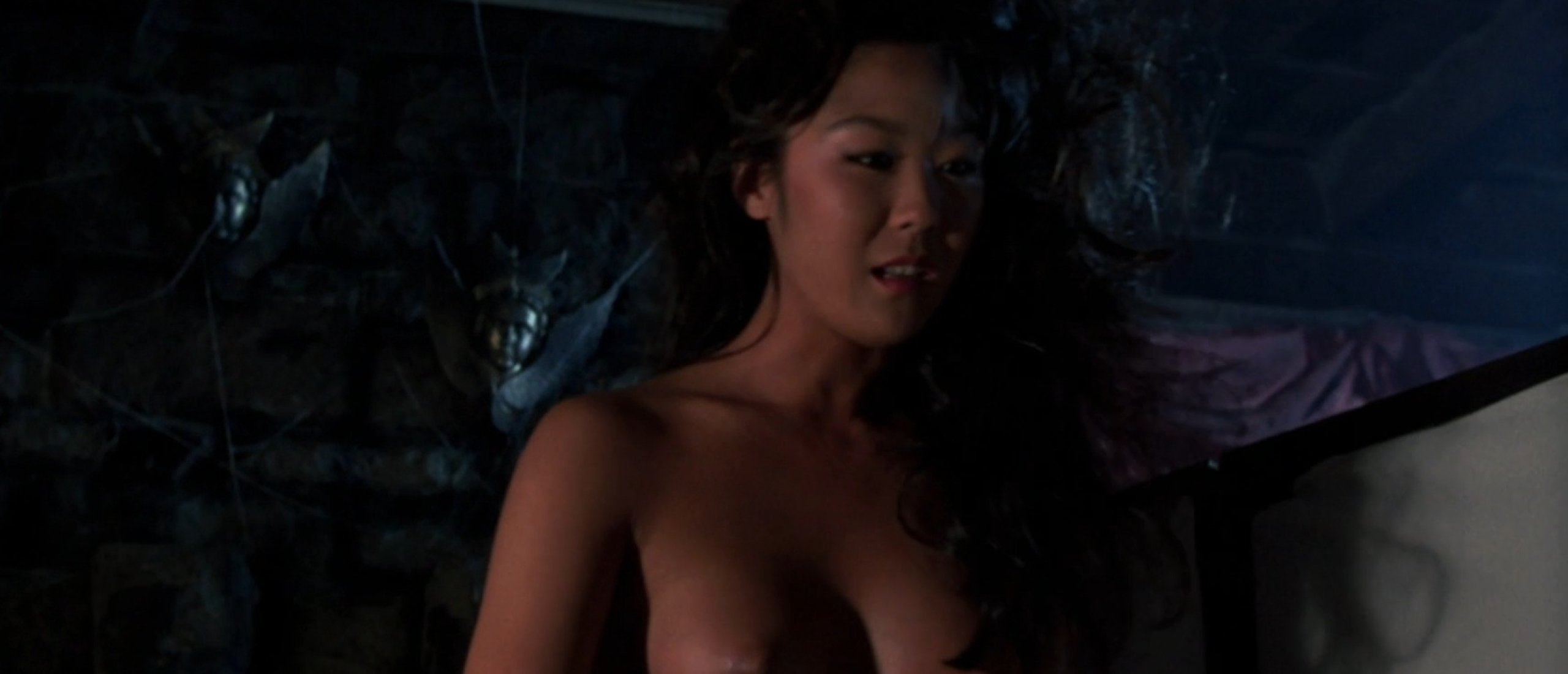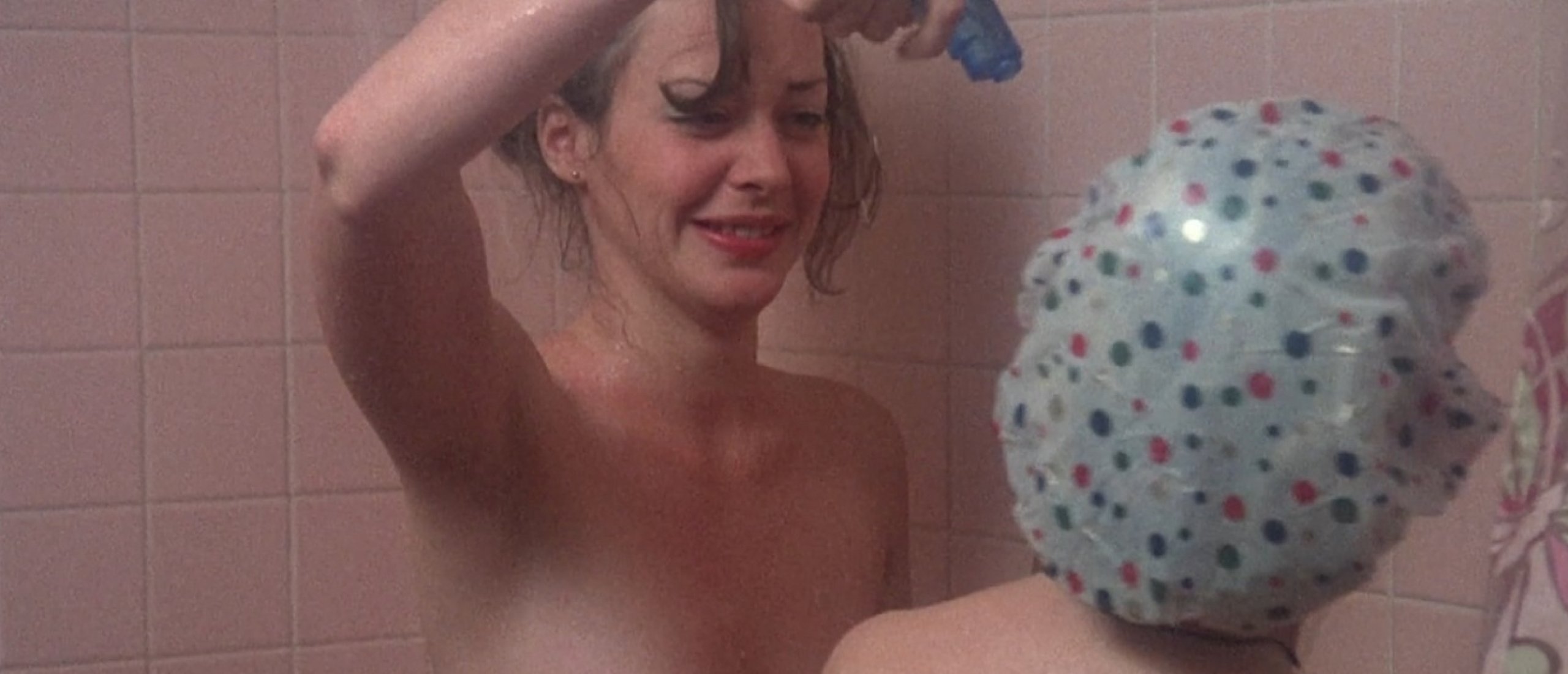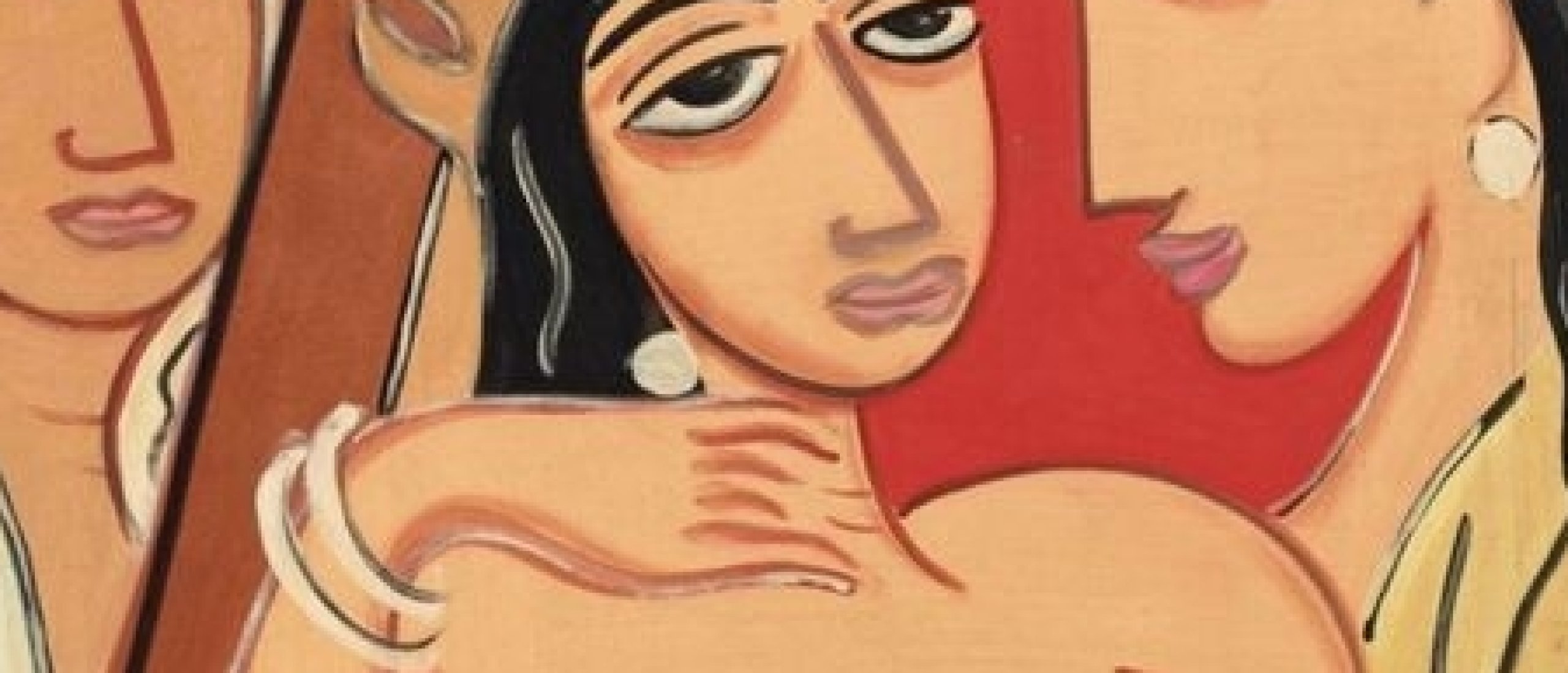
George Keyt (1901–1993) was a Sri Lankan painter known for fusing modernist abstraction with the flowing sensuality of Indian and Sri Lankan temple art, often drawing influence and inspiration from the Buddhist and Hindu mythology but seen through his unique lens. I personally prefer Keyt’s half-modern and half-nostalgic sensual paintings to Francis Newton Souza’s half-grotesque and half-ancient paintings of nude women, but they are both important painters in their own right.
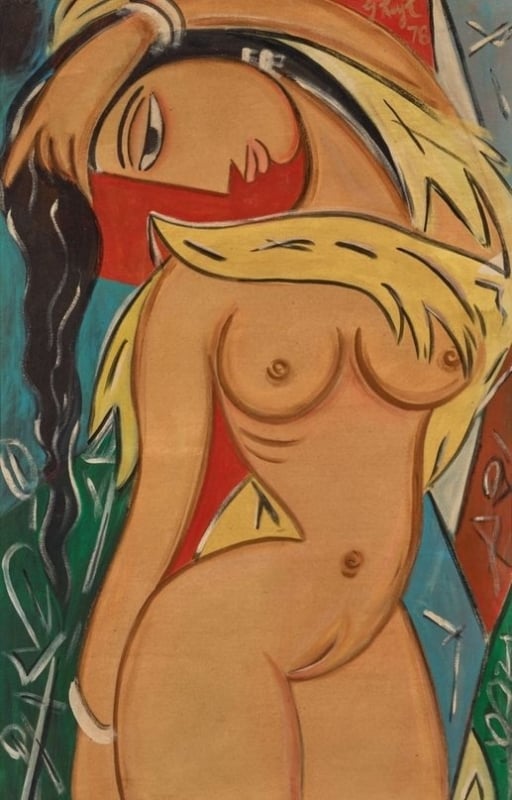
Fig.1 George Keyt, Untitled (Nayika), 1978
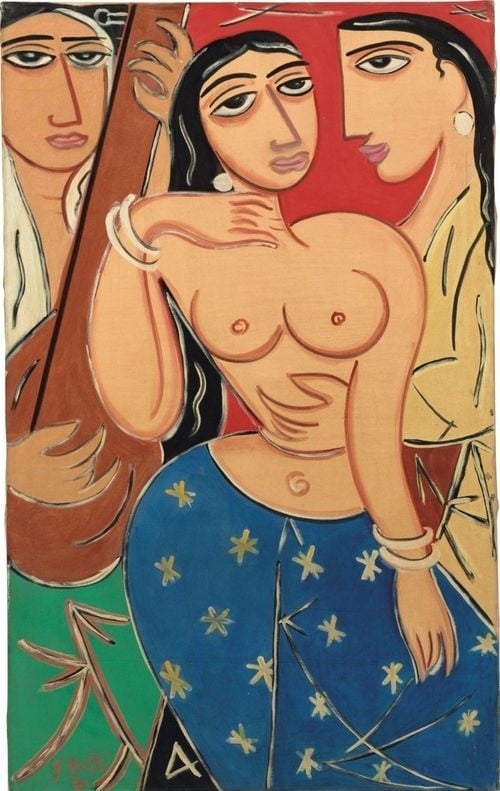
Fig.2 George Keyt, Untitled, 1981
Tender Inevitability
George Keyt’s paintings unfold like whispered poetry, spare in detail yet lush with suggestions. Born in Ceylon in 1901, Keyt stood at the crossroads of cultures: a modernist mind steeped in the ancient visual language of the subcontinent. His figures, mostly women, emerge in curves and arabesques, their limbs elongated like temple sculpture, their eyes cast downward in a gaze that is both demure and knowing. The erotic in Keyt’s work is not crude or confrontational; it is devotional. Much like the sculptors of Khajuraho or the muralists of Ajanta, he understood that sensuality could be a form of worship, a way of revealing the divine through the human body. Lovers in his paintings lean into each other not with overt lust but with a tender inevitability, as if union were written into the architecture of the cosmos..
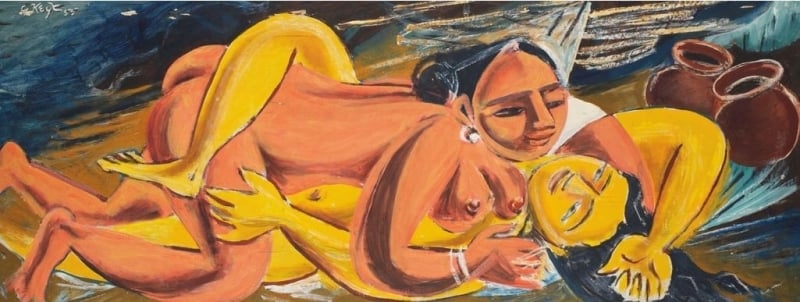
Fig.3 George Keyt, Untitled (By the Stream), 1955
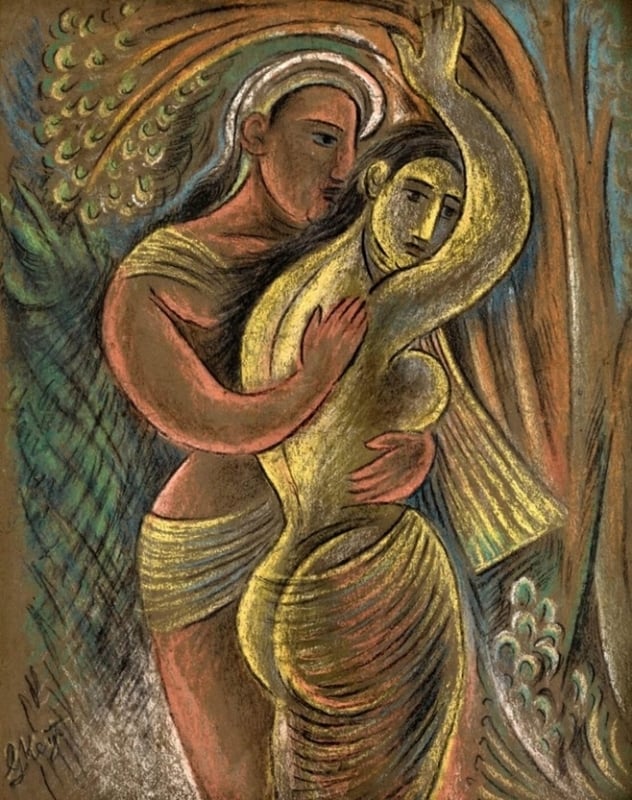
Fig.4 George Keyt, Couple, 1966
Geometry and Flesh
His painterly palette of earthy reds, muted golds, and cool blues feels drawn from worn frescoes, pigments aged by the smoke of the temple smoke and the moist monsoon air. The women’s bodies are rendered in simplified planes, almost Cubist in construction, but softened by curves that seem to move even in stillness. Static and yet dancing. This balance between geometry and flesh, between the intellectual and the sensual, is where Keyt’s genius lies. Visually I feel traces of Picasso in some of Keyt’s work, for example in Fig.5. and Fig.6. but then again Picasso was inspired by ‘primitive art’.
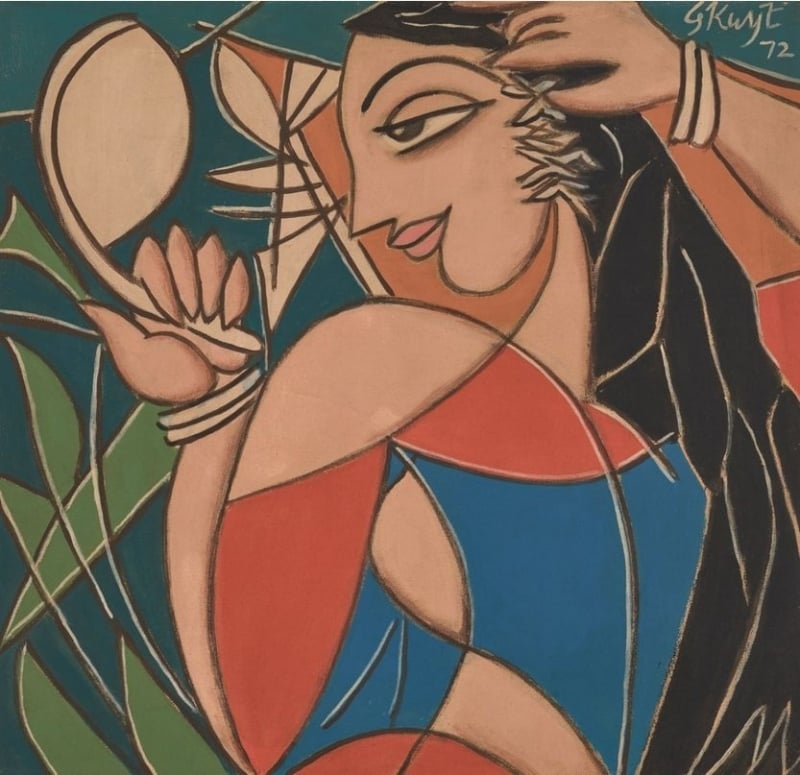
Fig.5 George Keyt, Untitled, 1972
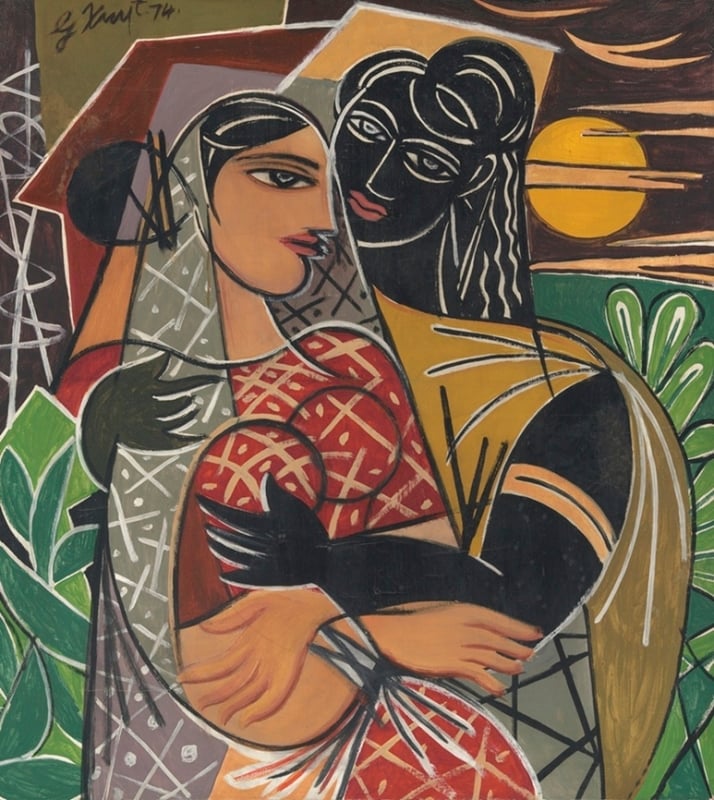
Fig.6 George Keyt, Ratikeli, 1974
Desire’s Fulfilment
Eroticism for Keyt was never separate from spirituality. His lovers echo Radha and Krishna, Parvati and Shiva, entwined not merely as bodies but as energies. The line of a hip or the arch of a neck becomes a mantra, a visual repetition that invites meditation. In this way, the erotic becomes less about desire’s fever and more about desire’s fulfilment, a return to the source. In our modern lens, where eroticism is often stripped of its ritual or cosmic frame, Keyt’s art feels like a reminder: the body is not an obstacle to transcendence, but its vehicle. The curve of a thigh, the clasp of a hand, the meeting of eyes, these are sacred geometries.
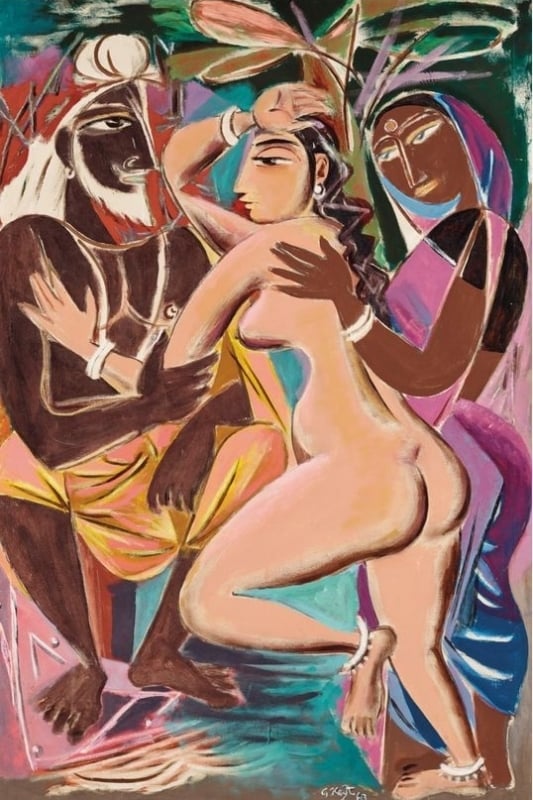
Fig.7 George Keyt, Untitled, 1963
Become an ALL-ACCESS member in Premium now and check out the extended version of the article including more on Keyt's use of beautiful sinuous lines, his version of "Leda and the Swan", his "eye" aesthetics, the similarities with the erotic paintings of Goan painter Francis Newton Souza, the influence of the Kama Sutra and MORE!
Click HERE for the barbaric sensuality in paintings of Picasso's successor Francis Newton Souza
Let us know your thoughts on Keyt's erotic paintings in the comment box below..!!

